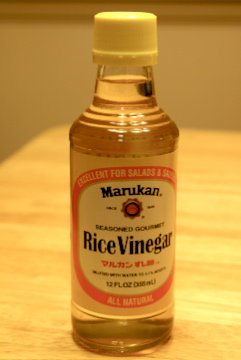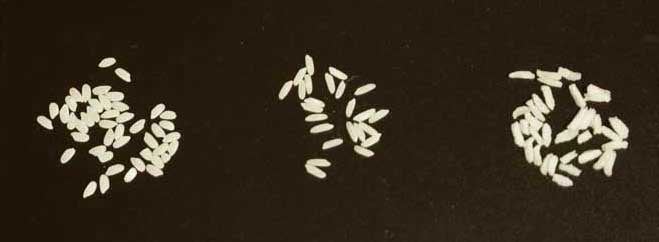|
Sushi Rice
Great cooked rice makes great sushi rice. So, we focus on well made grains. Even if you don't have an electric rice cooker we have that area covered. There are 2 ways to cook rice. With or without a rice cooker.
1. Click Here for Recipe WITH Rice Cooker 2. Click Here for Recipe WITHOUT a Rice Cooker 3. Rinsing the Rice. How much water do use to make sushi rice? 4. Rice vinegar seasoning recipe 5. Method to preserve left-over cooked rice so that it retains its moisture and taste Shop rice cookers for making rice. Proper Grain Selection Go to the grocery store and look for a Japanese type rice which is a short grained sticky rice. If you are not sure what to look for seek brands such as: Nishiki (Botan, Nishiki, Nagomi are brand names and or trademarks non of which Lets-Make-Sushi is affiliated) 
The rice above is what I've picked up from the local grocery store in the international foods aisle. The 'Calrose' designation means that it is grown in California and is well suited for making sushi rice. Brown, long grain and other type of rice may also be calrose. Be sure it is short grain japanese rice. If it is labeled "new crop" the more prized it is for texture and flavor. Just make sure to use slightly less water when cooking the new crop rice.
The grains in the middle is a long grain rice and will not hold together for sushi rice. Do not use this type. The grains on the right is minute rice and also will not be very good for our purposes.

Close up shot of each grain of rice in the same order as the piles in the last photo. Left=Short grain, middle=Long, Right=Minute Rice.
Rice Vinegar
Rice vinegar basically comes in 2 different forms. First there is regular rice vinegar or unseasoned (above). If seasoned vinegar (pictured below) is not available, you'll need to add the seasoning yourself. Vinegar Seasoning: 4 tablespoons unseasoned rice vinegar 2 tablespoons sugar 1/2 teaspoon salt prepare the mixture in a glass or plastic bowl and warm in microwave oven for about 10 seconds or warm enough to dissolve the sugar and salt. Mix and set it aside or place in refrigerator to cool. 
If 'seasoned gourmet' rice vinegar is available. Do not use the above recipe to season it. It comes already seasoned with sugar and salt. Some people like to add more sugar to the vinegar. Feel free to add more sugar and/or salt to your liking. The majority of chefs have their own combination of flavors added to the rice vinegar for optimum flavor. These may include dashi or japanese soup stock made with bonito flakes and kombu (dried kelp). The Real Sushi Secret Restaurants and bar chefs know that to stay competitive among other restaurants, the fish, crab, cucumbers, etc. will not change too much in flavor. Raw tuna tastes like raw tuna. However, the secret in adding greater flavor is in the rice. Ha, there you have it. Try to notice this at different sushi bars and restaurants. See if you can tell what subtle flavor is in the cooked rice. Coconut oil? Perhaps. Choose a cooking method for instructions.
|
 The above graphic shows 3 different rice samples. The one on the left is the one we want for rolls and nigiris. It is a short grain and in this case Botan brand.
The above graphic shows 3 different rice samples. The one on the left is the one we want for rolls and nigiris. It is a short grain and in this case Botan brand.